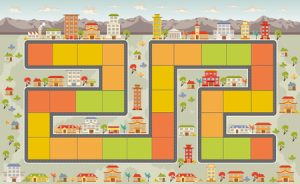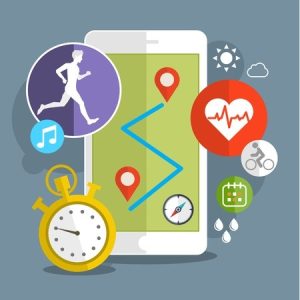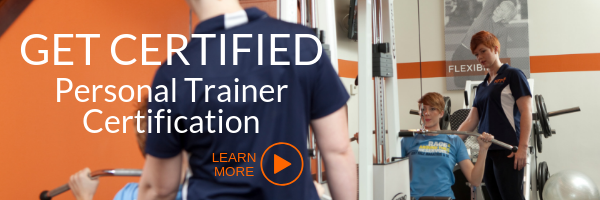
Theme-based personal training sessions or gamifying training can bring more fun into your workouts with clients.
We all know the drill: Welcome the client, warm up, work out, stretch, schedule next week’s session, thank the client and say goodbye. While we may be offering a highly effective training session, did the client truly enjoy his hour with you?
At our very core, we trainers are a knowledgeable and experienced group of professionals. But how good are our motivational techniques? In order to keep each session unique, invigorating and – yes – fun, we occasionally have to vary our approach.

The Psychology of Motivation
As personal trainers, we know psychology impacts and dictates human behavior and influences our sense of motivation and interest. Think about it – we are, by nature, pre-programmed to satisfy our needs.
How an individual chooses to satisfy a particular need is influenced by the key psychological factors of motive or motivation, perception, learning, and attitude (Kerin, Hartley, & Rudelius, 2010). Motive or motivation is described as the energizing force that drives an individual to satisfy a need or achieve a goal.
The second psychological factor, perception, is the act of selecting and interpreting information to produce meaning from that information. Learning, the third factor, is thought of as a change in behavior that results from the acquisition of new knowledge.
Lastly, attitude is based on an individual’s assessment or evaluation of a product, process, or program; attitudes can be either positive or negative based on the outcome of that evaluation (Kerin et al., 2010). Each of these factors plays a critical role in changing and shaping the behavior of all our clients. Furthermore, a sound understanding of the key psychological factors that influence consumer choice provides a foundation upon which to predict clients’ initial and sustained participation in a program or process.
The Concept of Gamification
The art of appealing to clients’ motivations, perceptions, knowledge, and attitudes require programs, products, and services that thoughtfully integrate engaging methodologies and strategies in an effort to combine function with fun. Perhaps one of the most psychologically influential innovations in consumer behavior is the concept of gamification.
Gamification – or the practice of integrating game design processes and techniques to non-game programs, products, and services, has added a new “edge” to consumer buying practices and participation (Swan, 2012). The goal of gamification “is to create incentives and a more engaging experience. In other words, it’s about fun” (Swan, 2012).
 This directly relates to the work we do in helping our clients build healthier lifestyles. Yes, we apply scientific principles to the development of workout programs and lifestyle plans based on assessments, desired goals, abilities, skills, likes, and dislikes.
This directly relates to the work we do in helping our clients build healthier lifestyles. Yes, we apply scientific principles to the development of workout programs and lifestyle plans based on assessments, desired goals, abilities, skills, likes, and dislikes.
But what about the fun factor? A program doesn’t have to be mainstream or traditional to be effective. Gamification may just be the golden ticket to motivating a client who is in a rut or who struggles with intrinsic inspiration.
The next time you are in the process of designing a program for a client, consider how you can include the fun factor and make a game out of physical work and desired achievement. Here are some ideas to get you started.
Let the games begin
Scavenger Hunt
Set up a scavenger hunt with each station including a specific set of exercises. Once the client finishes the exercise, give them the next clue as to the next move and location. Incentivize this with activity with a prize or achievement specific to what your client likes or enjoys doing.
For example, consider a book or a small gift certificate to a store. You can use computer software programs to print your own certificates of achievement and at the end of x amount of achievements, incentivize again – a free session or movie ticket, for example. This is a great tactic to use in an outdoor setting such as a park.
Obstacle Course
This is an awesome approach with your competitive clients and those who don’t enjoy performing cardio on a machine. Simply put, this is a fancied-up circuit with inventive names for exercises. Set up a 30-minute course that alternates pushing, pulling, core, and lower body movements. You can even throw in some high-intensity dynamic moves to boost heart rate.
Pact Power
I love this for group settings because it reinforces social support, encouragement, and friendly competition. This works well if you design it for 4-6 weeks with a group of clients. Have them pair up and create a pact to achieve a goal by a specified time period. At the end of each week or start of each week, have each small group document their progress and plan to continue forth. Store these reflections in client files and remind them of their previous week’s reflections and progress.
All Around the World
This is fun for all types of clients. Capitalize on the intrigue of travel and set up a world tour where each minute or session or 1000 steps equals so many miles to a new destination. Clients can pick the area they would like to travel to (for real or fantasy). Along their “journey” offer unique and culturally themed prizes to keep them motivated and interested.
Let Your Creativity Speak
Not everything has to necessarily be a “game’ to be fun. Consider theme-based training weeks that you can couple with seasons or holidays
To help stave off the late winter doldrums, consider introducing a week of “Spring Into Action” workouts. For every client you train during this week, create a regimen that weaves plyometrics training into the strength portion of the workout.
For clients with children, that final week of summer break before school begins can seem to stretch on and on. Designate this the “Final Stretch” week, and add an abundance of stretching exercises to each session.
The seven days prior to Easter can become “Hop To It” week. Add hops and jumps to create mini cardio circuits in between strength training sets.
Certainly, we can have fun with more traditional holidays. Offer a “Punch Line” week prior to April Fool’s Day by incorporating boxing moves and hitting a heavy bag.
Valentine’s Day is a natural for “Good For The Heart” nutrition lessons at the end of the training hour.
Halloween can be filled with variations on the jumping jack theme for “Jack O’ Lantern” week. It’s easy once you get thinking!

Research Fitness Apps
You can also take the guesswork out of gamifying or find inspiration by researching fitness apps designed to infuse fun and competition into fitness. Find something that relates to the interests of your clients and reward them for progress.
Gamification works; a significant number of examples exist that demonstrate the very success of this concept. The trend of gamifying processes and programs is likely to influence daily choices and decisions. Perhaps the world offers many “stages” and, as players, we are inherently, but unconsciously, tied to the natural human instincts to compete, win, and secure the prize – no matter the task, no matter the “stage”. Here’s to making the workouts you design too fun to miss!
Fun Personal Training For Older Clients

Not all of our clients are equipped to bunny-hop or punch the heavy bag. For those participants with special mechanical considerations, we can still find ways to be fun and creative with themes.
Here’s a great example that grandparents will love! As a new grandparent myself, I can attest to the difficulty in restraining myself from buying every adorably feminine piece of clothing I see for our 1-year-old Madelyn!
Create a week of “Let’s Swap Buying With Biceps”! For 1 or 2 weeks, challenge those grandmas to train their biceps instead of honing their buying skills. They will laugh all the way through their workouts!
For those clients training to compensate for bone loss and osteoporosis, start a “Bend But Don’t Break” challenge to allow them to showcase their postural progress and balance skills.
Senior exercise enhances lives and can be fun!
Other Fun Personal Training Ideas
If games and tricks aren’t your bag, there are plenty of ways to keep sessions “unboring”:
Music
Set up a playlist beforehand. You can play your client’s favorite genre including some of their favorite songs. Try playing a few entertaining songs that coordinate with the exercises. *Some songs have explicit lyrics, so use your own discretion.
“Side to Side” by Ariana Grande (resistance band side steps)
“Motivation” by Normani (any challenging exercise)
“Never Really Over” by Katy Perry (towards the end of the training session)
“Push It” by Salt-N-Peppa (overhead presses, bench presses, squats)
“Baby Got Back” by Sir Mix-a-Lot (glute-targeted exercises)
“I’m Too Sexy” by Right Said Fred (any exercise)
“Jump” by Van Halen (burpees, box jumps)
Pictures
A picture is worth a thousand crunches? Well, maybe not, but it’s still worth trying! A celebrity crush can be a fun motivator. Find posters or pictures of your clients’ celebrity crush or even their current sweetheart if that’s what they’d prefer. Position them on the wall where your client might be coming up from crunches, balancing on a BOSU ball, or in view while swinging kettlebells.
Double the fun. If the celebrity crush happens to be a musician, you can incorporate the music playlist with the poster.
Jar of Choices
Come up with the planned exercises for parts of the training session and write them on individual pieces of paper. Fold the pieces of paper in half, so the exercise isn’t visible. Put them in a jar or container, and let your client choose the exercises one at a time.
This takes a little planning, but you can use the jar of choices multiple times. You might want to have a jar for cardio and one for strength training. Or have your client choose from the jar for their warm-up or cool-down. I’ve tried this “jar of choices” with several outdoor training sessions, and it worked very well. It can also be effective indoors. There are pre-made decks of cards with different bodyweight exercises that can work just as well if you prefer.
The clients feel somewhat in control and it adds variety to the workout. You might hear an “ugh” from them, but they chose it!
 Achievement Awards
Achievement Awards
Give out achievement awards for small feats like a client who extends their walking/running distance, gains strength, hits a weight loss goal, or if you see a positive change in attitude. You might recognize a certain number of sessions completed. Print out certificates to make it somewhat official or give them small gift certificates. Check with local health food restaurants and sporting equipment stores to see if they will give you vouchers for discounts. Give the vouchers to your clients in lieu of certificates or along with them.
Getting creative and coming up with your own ways to have fun during sessions can help boost your morale just as much as your clients’, keeping your workouts fresh and your professional bond stronger.
Having Fun Is Fun-damental
My personal goal with clients has always been to have them leave the gym feeling empowered and excited to return. While not all clients “love” working out as much as I do, it isn’t all that hard to make our hour together at least pleasant enough to warrant a repeat performance, and sometimes we really have a good time training!
The power rests in your hands, your imagination, and your skills in creating dynamic and fun programming!
What have been your best theme-based session ideas for making fitness fun?
References
Kerin, R. A., Hartley, S. W., & Rudelius, W. (2010). Marketing. New York: McGraw-Hill Higher Education
Shakespeare, W. (2007). As you like it (J. Bate & E. Rasmussen, Eds.). New York: Modern Library.
Swan, C. (2012). Gamification: A new way to shape behavior. Consumer World. Retrieved from







